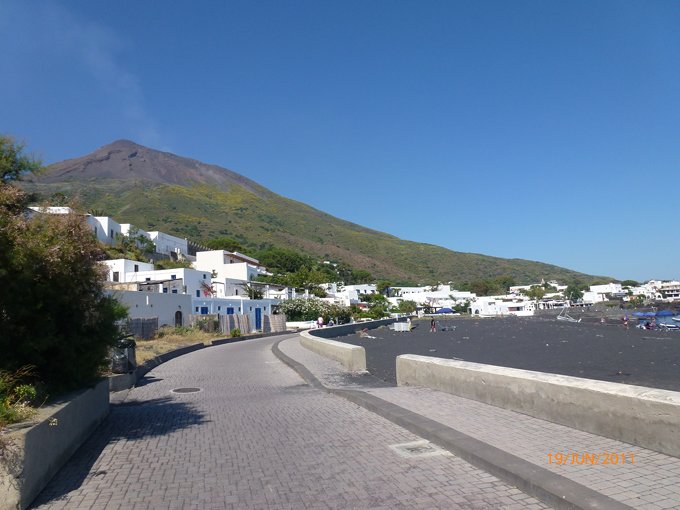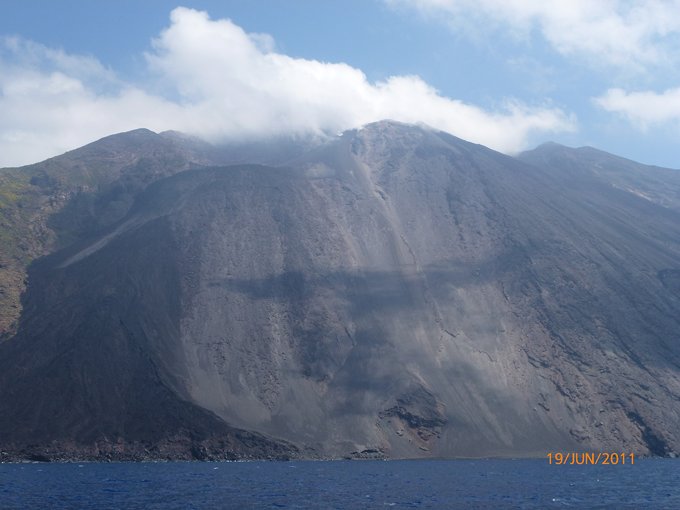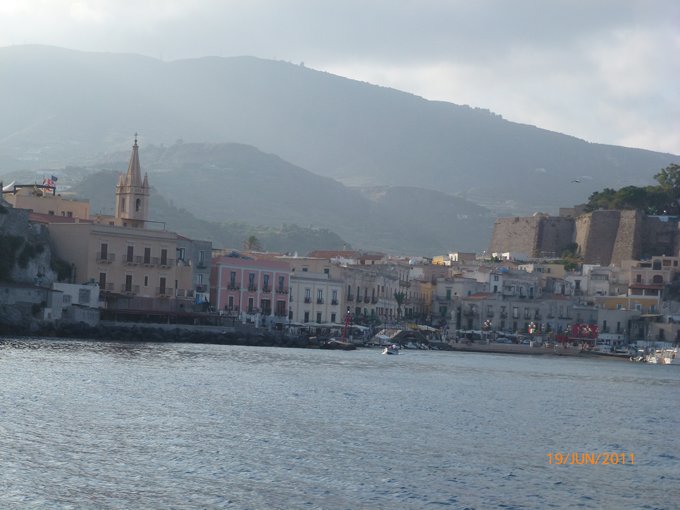38:48.45N 15.14.37E Stromboli

Saturday, 18th June, 2011.
We motored 50.86 miles from Cetraro to Stromboli on a glassy sea. The water temperature was a steady 30.6 which we tested when we anchored at the island in sight of Strombolicchio the little island off of Stromboli. We only saw one motor cruiser which came as close as he could in the whole 9 hours. We caught no fish, saw no dolphins or flying fish and when we were 25 miles out we could see the Italian mainland and Stromboli it was so clear. We commented this feeling of being alone must be like crossing the Atlantic without sight of land or any yacht or person for days on end.
Stromboli is part of the archipelago called the Lipari Islands or Aeolian Islands after the principle island and lie 35 miles off the coast of Sicily. The islands are peaks of volcanoes and two still remain active, Stromboli and Gran Cratere on Vulcano. The seven islands are Stromboli, Panarea, Filicudi, Alicudi, Salina, Lipari and Vulcano.
The islands have been inhabited from early times and were prey to pirates and colonisers. The islands take their name from Aeolus, the god of winds. It was he who gave Odysseus the contrary winds tied up in a bag believing it to be treasure inside and he was blown away from his homeland.
Five of the islands are nature reserves but no marine reserves so far have been established. Thank goodness! There was a massive collection of jelly fish swimming around the area. Someone had to be on jelly fish watch while the others swam.
Stromboli’s volcano is over 3,000 feet high and has been called “the lighthouse of the Mediterranean”. We could see it puffing and letting off pressure but although I jumped up several times during the night to try and see any lighting shows but I was disappointed. We could see where the volcano had been active and a new layer of lava falling down the slopes could be seen as we come into anchor and we witnessed the hot steam coming off the lava stream. We also saw purnice in the water.
The next morning we went ashore and walked along the south side and away from the north west where the lave flows. We were quite amazed how many houses, restaurants and sun bathers there were on such an active volcanic island. We bought fruit and vegetables from a market stall. The black sand was still on the potatoes. Frank decided he wanted to climb Stromboli although it was eleven in the morning and already very hot so with a water bottle he set off. He climbed nearly to the top and would have made it if we had not given him a time limit as we knew the wind was going to get up. We had watched from Ariel the evening before large groups of people with head lamps appear from the west ridge and cross to the centre of the island and walk down. These tours we discovered cost 28 euros for the 2 ½ hour trek.
After lunch we left Stromboli as the wind started to become quite strong. We motored around the northwest side on our way and witnessed some lava falling and large patches smoking.










